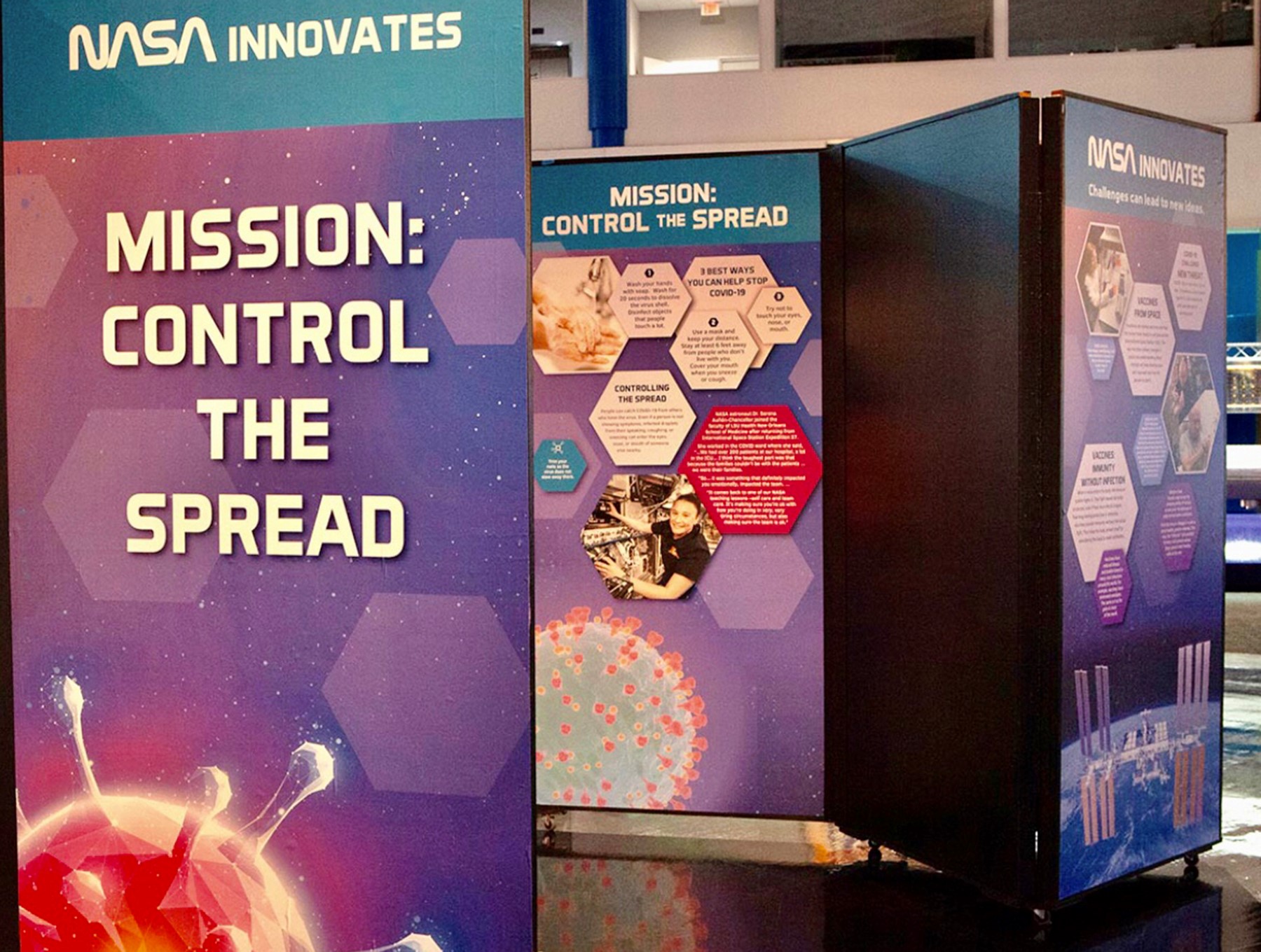The COVID-19 pandemic at the very least has caused changes and disruption in all our lives, and in some cases it has been much much worse. Through news reports and social media we have been made aware of some of the individuals and organizations combatting the virus. So many are involved in this effort, you may even be surprised to know that NASA has been part of the national effort to fight the pandemic. A recent ten-panel info-graphic exhibition produced by Space Center Houston provides more details on how the special talents of the space agency were brought in to find ways to help. Some examples of the items various NASA centers worked on can be seen here https://spacecenter.org/exhibits-and-experiences/mission-control-the-spread
An immediate challenge for our library was to find ways to offer content and programming, when dealing with reduced hours of operation, no on-site events, and caps on how many patrons could be in the building at any one time. “Mission: Control the Spread” allowed us to present timely information that could be experienced by patrons during a difficult time for library programs. An Educator’s Guide developed for the exhibit allowed us to reach out to teachers in the area and to produce some videos related to the exhibit on the library’s YouTube Channel. For more information, and to find out about arranging for your own exhibition, and Educator Guide inquiries, contact https://spacecenter.org/exhibit-request/
When an exhibition contract has been agreed to, libraries can print out the exhibition files in a size that would work best for their building. The graphics are appropriate for all age groups and feature imagery of life on the International Space Station, work at the various NASA field centers, and some of the inventions that came out of the research.
The accompanying Educator’s Guide features activities such as changing behaviors, the physical properties of viruses and viewing change from space.
A DIY activity that would be aimed at older students that are perhaps not able to be involved with after school robotics teams or similar activities of clubs is the PULSE pendant developed by the NASA Jet Propulsion Lab. This is a simple device that when worn like a necklace will vibrate to warn you that you are about to touch your face. https://medeng.jpl.nasa.gov/covid-19/pulse/
our library purchased the necessary supplies to assemble one and used our 3D printer to print the pendant casing. I will be producing a “how to” assembly video of a PULSE pendant for our library patrons later this month.





Leave A Comment